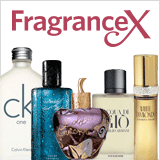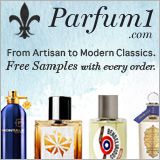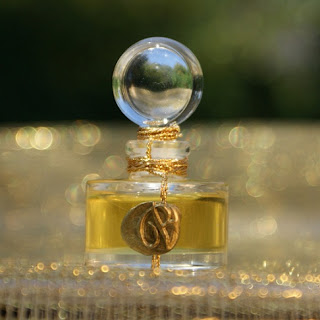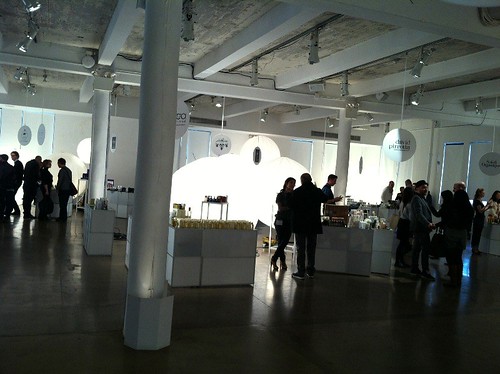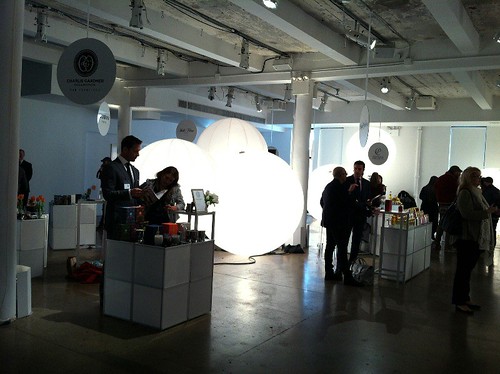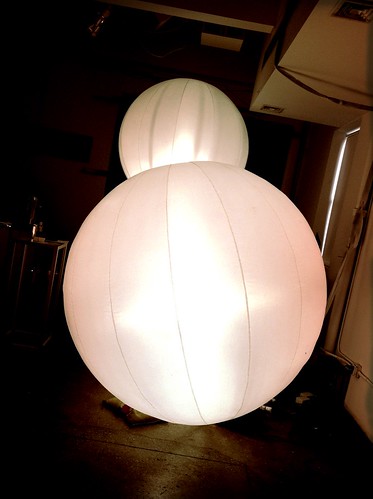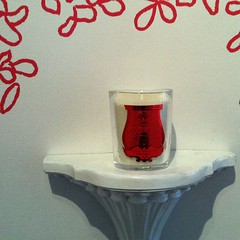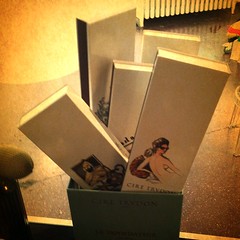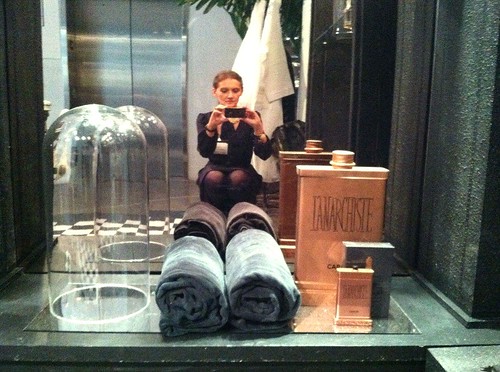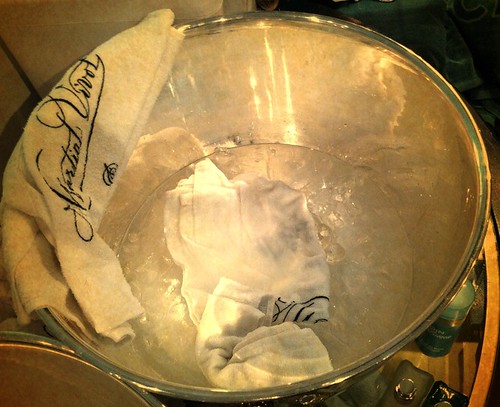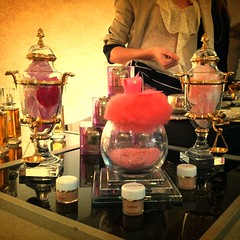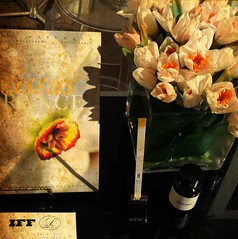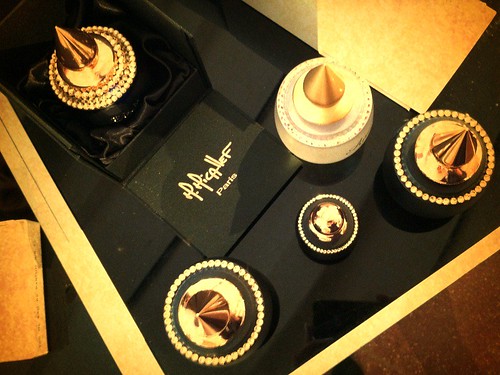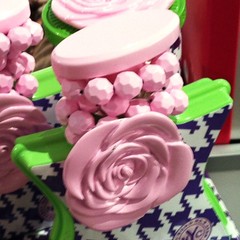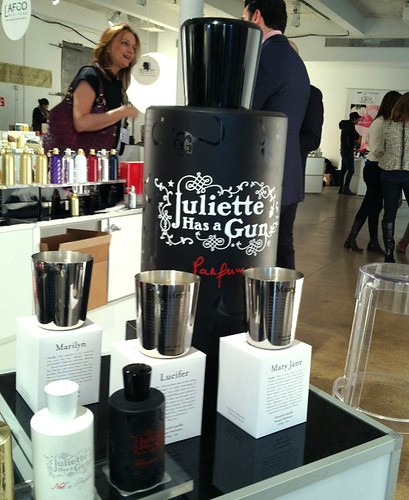Just Go Ask Shelley: Announcing a New Natural Perfumery Book by Shelley Waddington of En Voyage Perfumes
By Donna The mysteries of perfumery are a little less opaque to the rest of us thanks to an excellent book on working with natural fragrance isolates written by perfumer Shelley Waddington, the owner of En Voyage Perfumes. I was especially eager to read it when I first learned of its impending publication, because Shelley just happens to be the author of one of my favorite fragrance releases of 2011, or any year, the wonderful Vents Ardents. I am not alone in my admiration for it, but it was my first exposure to her work and I really wanted to know how she did it. Well now I have an idea, thanks to her new book entitled Perfuming With Natural Isolates: The Complete Reference Manual. This might seem like a dry topic to anyone who is not a perfumer, but I found the book to be very engaging, and it is written in a clear, concise style that makes it easy for the lay person to follow. I have an enthusiastic amateur’s interest in aroma chemicals, perfumery and applied chemistry, but I am far from conversant in the technical language of these specialty fields. This book walked me through the steps so effortlessly that I feel as though my knowledge of this field has been exponentially increased. Anyone who still thinks that natural perfumery consists of hit-or-miss mixing of oils and hoping for the best will be enlightened to the contrary – it’s just as much science as it is art, and the author of this book has mastered both. The first two chapters are devoted to explaining what natural isolates are and how they are extracted from the source materials. Some are obvious, such as limonene from citrus, while others are less familiar to the average person, such as d-carvone from caraway seed. What I found fascinating was which sources are actually used in commerce – it’s obvious that vanillin would be prohibitively expensive if real vanilla pods were the only available source for extracting it, but fortunately this molecule is widely found in nature and is commercially extracted from cloves, which are also the source for eugenol, the “clove and carnation” aromatic isolate; it is also found in such diverse sources as beet sugar, potato skin, coffee and yerba maté. Who knew? Fun fact: the author included an article about how vanillin has been extracted from cow dung by Japanese researchers who hope to use it commercially in non-food sources. It makes sense if you think about it, since it is rich in lignin, the same woody material that makes old books smell sweet as the paper degrades. In the next section, a variety of natural isolates are discussed in depth. Shelley made it easy for people like me by listing the detailed descriptions for each of the specific materials being examined and explaining what each one is suited for - is it a top note that’s gone in an hour, or is it a base note that lasts 400 hours on a scent strip? Each molecule (and the isolates in question are specific molecules, not blends or compounds – she even shows a picture of the actual molecular structure of each one) is analyzed as to where it is found in nature, what its commercial source is, what chemical family it belongs to, whether or not it is associated with any sensitivities or toxicity, and most importantly for the end result, what qualities each one can impart to a finished fragrance when used correctly. She also gives us examples of how a natural perfume isolate might be used to create the effect of a classic fragrance; for example, the great Diorama, a fruity chypre from 1949, would be a fun subject for experimentation with an isolate called raspberry ketone, a long-lasting base note with a sweet, fruity, jammy aroma, with which a perfumer could build a similar perfume with all natural materials. I think my favorite one in the book is strawberry furanone natural – it’s a base note that smells of strawberry, cotton candy, caramel, pineapple and brown sugar – what perfumer could resist playing around with that? I would be like a mad scientist let loose in the lab! Shelley suggests numerous experiments for perfumers to try with each material and lists compatible notes. If I were a perfumer I would be most eager to try them; she gives clear instructions for preparing and mixing materials, as well as safe and proper storage for each type. Did you know that aldehydes are unstable and should be stored under a layer of inert nitrogen? I didn’t, but that would also explain why perfumes with substantial amounts of aldehydes in them tend to “go off” faster than many other fragrances. Shelley shows step by step instructions for recreating historic “handkerchief” perfumes and suggests starting points for building perfumes of specific styles. It made me want to start my own home perfumery laboratory, so it should be even more enticing for those who already have perfume making skills. I can’t recommend this book highly enough for anyone interested in perfumery; from the collector to the beginning student to the serious professional perfumer, as there is something for everyone. (I know I will be referring to it over and over again, and every time I smell a fragrance I will catch a note and think, is that strawberry furanone or maltol I detect? How much eugenol is in that carnation soliflore?) Chapter four is an extensive Q & A section that addresses subjects such as the difference between top and base notes, Schiff’s bases, and the subtle differences between the same isolate extracted from different plant sources. The questions were selected from actual inquiries Shelley has received from both students and perfume professionals. Again, this was highly enlightening and answered questions I did not even realize I needed to ask. Finally there is a glossary, a list of resources for more information on natural isolates, a reading list and a listing of sources for the perfumery materials. Did I mention that the book is also beautifully illustrated? If you want to know how Shelley backs up the expertise demonstrated in the book in her perfumery work, look no further than the latest fragrance launch from En Voyage, the gorgeous Carmel Bohême. It is a reworking of a previous release called Bohemia, which I have never tried. The new scent is a delightfully exuberant composition that captivated me immediately. It begins with a decidedly green burst of citrus, plum and muguet that gradually gives way to a rich floral heart of gardenia and tuberose, both from natural enfleurage sources, plus French jasmine, and a base rich with honey, amber, patchouli and resins makes it last very well. The muguet note lingers on and gives airiness to this fragrance throughout its time on the skin, and I love the way it meshes with the languid tropical floral notes. Fans of classic white floral fragrances are sure to be enchanted by it. It is heady and rich without being overpowering and smells like summer vacation in a bottle; I picture myself relaxing in the midst of a blooming seaside garden while a fresh breeze blows in from the ocean. I also had the opportunity to revisit Shelley’s popular Go Ask Alice from the 2011 Summer of Patchouli Love project. It was not one of my top choices at the time, but perfumes, like wine, need time to age and smooth out the rough edges, and the vial of Go Ask Alice I have now is marvelous- yes, it is still very much a patchouli fragrance, but it’s as smooth as silk and has a beautiful fruity and floral aspect that I did not get in the fresh, “raw” version I tested before. It has a delicious drydown featuring vanilla, Peru balsam, cocoa, vanilla, Tonka bean, real ambergris, and of course patchouli, of a particularly fine vintage from Sumatra. Now this I would definitely wear! I normally do not favor perfumes with patchouli as a major ingredient unless it is embedded in a chypre structure, and especially in a rose chypre style, which works a peculiar magic with a patchouli note, but this is really wearable even for a patch skeptic like me. If I can wear Go Ask Alice, just about anyone can. Image credits: The beautiful Carmel Bohême Extrait de Parfum bottle from envoyageperfumes.com; Detail of mimosa flowers via Wikimedia.org per Creative Commons Share Alike license. Disclaimer: The book and the perfume samples were sent to me gratis by Shelley Waddington for review and testing. Labels: Donna, en voyage perfumes |

